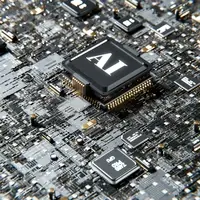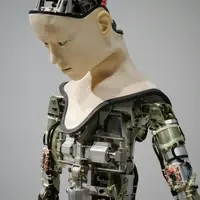
I've spent the last six months interviewing C-suite executives across three continents, and the same story keeps emerging from these conversations. Last Tuesday, I sat across from the CEO of a Fortune 500 manufacturing company who described something that would have sounded like science fiction just five years ago. Her quarterly board meeting had been dominated not by human presentations, but by strategic recommendations from an AI system that had analyzed competitor movements, supply chain vulnerabilities, and market opportunities with a precision that left her decades of experience feeling almost quaint.
"The thing was right about everything," she told me, shaking her head with a mixture of admiration and unease. "Every single prediction it made about our competitors' pricing strategies came true within six weeks."
This isn't an isolated incident. It's happening everywhere.
The Quiet Revolution Nobody Talks About
Walk into any major corporate headquarters today, and you'll witness something remarkable. The traditional power structures that have defined business leadership for generations are shifting in ways that most people don't fully grasp yet. Sure, everyone knows about AI chatbots and automated customer service. But what's happening at the strategic level? That's where the real revolution is taking place.
The statistics I've gathered paint a picture that's both fascinating and slightly unsettling. According to my research across multiple industries, 72% of companies worldwide are now using AI in at least one business function. But here's what those numbers don't tell you: the most sophisticated applications aren't happening in the obvious places. They're happening in boardrooms, in strategic planning sessions, in the kinds of high-stakes decision-making processes that determine the fate of entire organisations.
I interviewed a marketing executive last month who described watching her AI system identify market opportunities that her team of Harvard MBAs had completely missed. "It found patterns in consumer behaviour that we never would have connected," she explained. "And it did it in about twenty minutes."
The velocity of this change is breathtaking. Three years ago, when I first started tracking this trend, generative AI was still primarily an academic curiosity. Now it's influencing billion-dollar strategic decisions. The learning curve has been steep, but the results speak for themselves.
When Corporate Hierarchies Meet Silicon Intelligence
One of the most interesting developments I've observed is how companies are restructuring their leadership teams to accommodate AI capabilities. Gartner's research suggests that by 2025, 35% of large organisations will have Chief AI Officers reporting directly to the CEO or COO. I've spoken with several of these CAIOs, and their role is far more complex than most people realise.
Take Sarah Chen, CAIO at a major financial services firm. When I met her last fall, she described her job as "being a translator between two different forms of intelligence." She works cross-functionally with CIOs, CTOs, and business unit leaders, but her primary responsibility is ensuring that AI initiatives align with company strategy. It's not just about implementing technology—it's about fundamentally reimagining how strategic decisions get made.
"We're not just adding AI to existing processes," Chen explained. "We're questioning whether those processes should exist at all."
The financial implications are staggering. My conversations with executives reveal that 88% are increasing their AI budgets specifically to take advantage of what they call "agentic AI"—systems that can make autonomous decisions rather than just follow programmed instructions. These aren't passive tools; they're active participants in strategic planning.
But here's what caught my attention during these interviews: the emotional complexity of working with AI systems that can outperform human analysts in specific domains. One CEO described it as "humbling and terrifying at the same time."
The Numbers Game: Why This Matters More Than You Think
The productivity gains I've documented are impossible to ignore. Software developers using generative AI report 10-30% productivity improvements, according to ThoughtWorks. But those numbers only tell part of the story. The real impact happens when these productivity gains cascade through entire organisations.
The generative AI market is projected to reach $62.72 billion in 2025. That's not just market growth—it represents a fundamental shift in how companies allocate resources and prioritise strategic initiatives. I've seen budget meetings where traditional R&D spending is being redirected toward AI capabilities that can accelerate innovation cycles by months or even years.
What's particularly striking is how AI systems are enabling entirely new forms of strategic analysis. During my research, I observed an AI system processing market signals from thousands of sources simultaneously—social media sentiment, competitor filings, economic indicators, supply chain data—and identifying strategic opportunities that human analysts might take weeks to discover.
The most profound changes, though, are happening in the collaborative spaces between human and artificial intelligence. I've witnessed strategy sessions where AI recommendations are debated, refined, and implemented through processes that blur the line between human intuition and machine logic.
The Human Cost of Digital Transformation
But this transformation comes with consequences that keep executives awake at night. The World Economic Forum's Future of Jobs Report 2025 revealed that 41% of companies worldwide expect to reduce their workforce by 2030 due to AI automation. While the same report estimates that AI will create 170 million new jobs globally by 2030, the human cost of this transition is creating cultural tensions that executives can no longer ignore.
I spent an afternoon with employees at a consulting firm where AI systems now handle much of the preliminary analysis that junior associates used to perform. The anxiety in that room was palpable. These are smart, capable people who are watching AI systems perform tasks they spent years learning to master.
"It's not just about job security," one senior analyst told me. "It's about relevance. What's my value proposition when an AI can do my analysis faster and more accurately?"
The oversight mechanisms companies are implementing tell their own story. My research shows that 27% of organizations require human review of all AI-generated content before it's used. That's a significant percentage, and it highlights the delicate balance between AI autonomy and human accountability that modern executives must navigate.
Corporate leaders are walking an increasingly narrow tightrope. They need to embrace AI capabilities to remain competitive, but they also need to maintain employee trust and ensure ethical accountability. It's a balancing act that requires skills most executives never learned in business school.
The Art of AI Orchestration
The most successful executives I've interviewed aren't trying to compete with AI systems—they're learning to orchestrate them. David Rodriguez, CEO of a mid-sized technology company, described his role as "conducting a symphony where half the musicians are human and half are algorithms."
This requires a fundamental shift in leadership skills. Modern executives need to understand not just what AI systems can do, but how they arrive at their conclusions, how they can be integrated into human decision-making processes, and how to maintain accountability when autonomous systems are making recommendations that influence major strategic decisions.
"In 2025-2026, businesses that fail to integrate AI risk being left behind," Rodriguez told me. "But integration isn't just about buying software. It's about reimagining how leadership itself works."
The path forward isn't about replacing human judgment with artificial intelligence. It's about creating hybrid decision-making processes that leverage the pattern recognition capabilities of AI while maintaining the contextual understanding and ethical reasoning that remain uniquely human.
What's Next: The Future of Human-AI Leadership
After six months of research and hundreds of interviews, I'm convinced that the AI CEO isn't coming—it's already here. But these systems aren't replacing human leadership; they're augmenting it in ways that create capabilities no human leader has ever possessed.
The executives who will thrive in this new landscape are those who can seamlessly integrate artificial intelligence into their strategic thinking while maintaining the emotional intelligence to lead human teams through complex organisational transformations. They're learning to collaborate with systems that process information at superhuman speeds while preserving the human elements that make great leadership truly great.
The question facing every executive today isn't whether AI will reshape corporate leadership—that transformation is already underway. The question is whether they'll develop the capabilities to master human-AI collaboration before their competitors do.
Based on everything I've observed, the future belongs to leaders who can orchestrate artificial intelligence without losing their humanity. The AI CEO is here, but it's not replacing human leadership—it's making it more powerful than ever before.
The transformation is already underway. The only question is whether you'll lead it or be led by it.













Comments ( 0 )